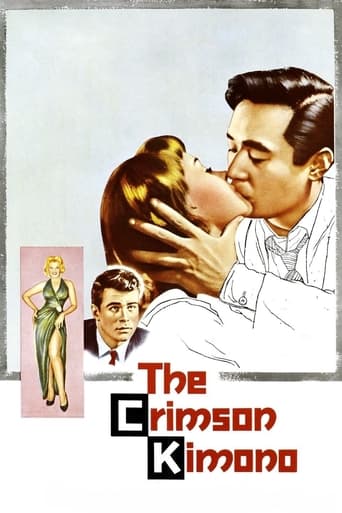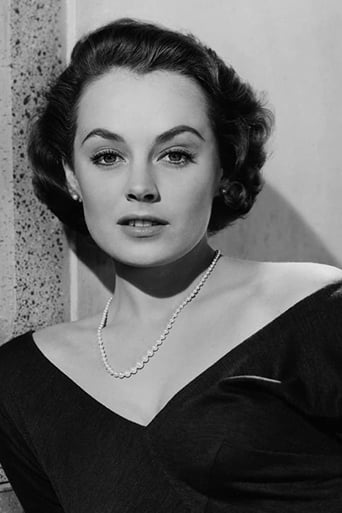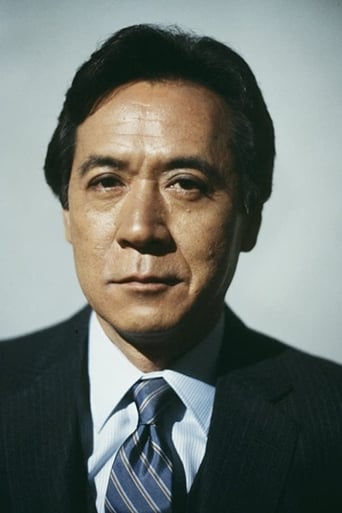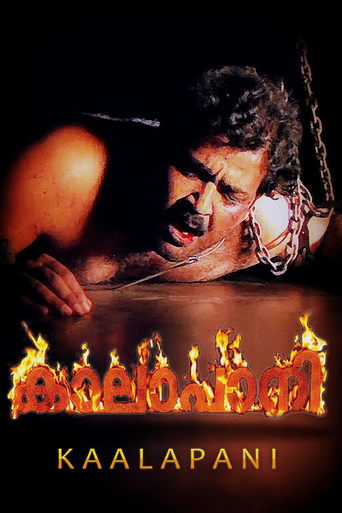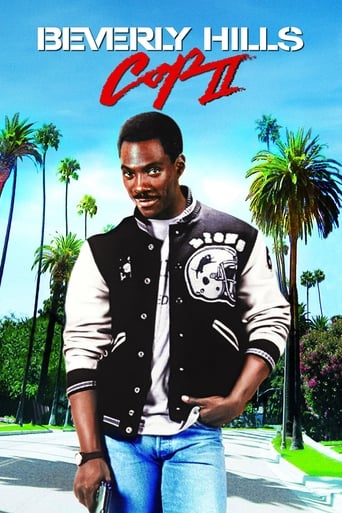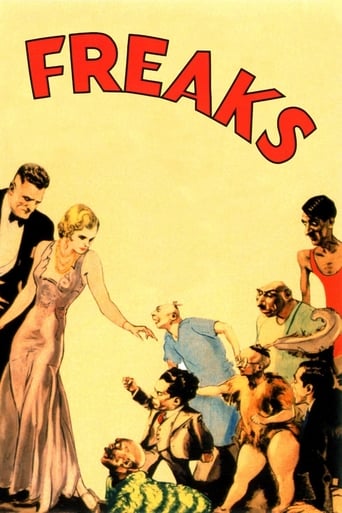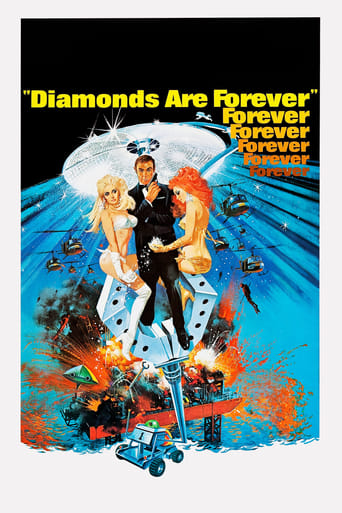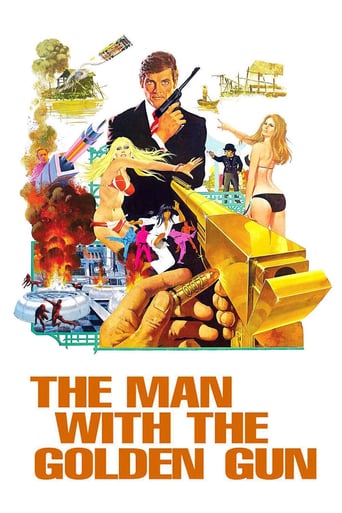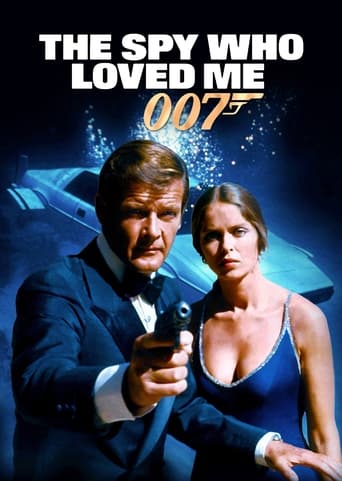The Crimson Kimono (1959)
A Los Angeles detective and his Japanese partner woo an artist while solving a stripper's murder.
Watch Trailer
Cast


Similar titles
Reviews
The Worst Film Ever
A lot of fun.
Strong acting helps the film overcome an uncertain premise and create characters that hold our attention absolutely.
It is an exhilarating, distressing, funny and profound film, with one of the more memorable film scores in years,
I remember seeing The Crimson Kimono when I was 12 years old when it was playing on the bottom half of a double bill back in the days they had those. I cannot remember the feature film, but this independent production distributed by Columbia never left my mind.It was the civil rights era so the time was right for one of the first interracial love stories to reach the screen. Glenn Corbett and James Shigeta are a pair of LAPD homicide detectives on the trail of a murderer who shot stripper Gloria Pall right in the middle of the street after running her down.This film is set in the art world, art of many kinds and a key witness played by Victoria Shaw is an artist who gives a better than normal police sketch of a man who was associated with Pall. Problems arise when both these cops fall in love with Shaw. Corbett assumes a kind of proprietary claim, but she wants Shigeta.As for Shigeta he's a tormented soul because he and Corbett go back to the Korean War and a blood transfusion from Shigeta saved Corbett's life. He also suspects prejudice for the first time in Corbett and the racial barriers loom in size for him. No doubt during World War II his family may well have been interred and that has to play into his psyche as well. There's a nice performance by Anna Lee in this as a rather worldly sophisticated member of the arts community who looks on Shaw as a kind of protégé. Lee was a member in good standing of the John Ford stock company, but he never cast her in a role like this.Samuel Fuller directed this on a dime, but he made that dime count with some nice location shooting in the Little Tokyo area of Los Angeles. There are some nice glimpses of the Japanese-American culture that most of us rarely see.The Crimson Kimono is a fine piece of work and Fuller and his cast deserve all the kudos we can muster.
After a stripper is shot dead, two LAPD officers investigate. Corbett and Shigeta, each making his film debut, play the cops. Corbett does OK, but Shigeta appears to be an unnatural actor; he looks like he is simply reading his lines. The murder investigation becomes secondary as the film focuses on the love triangle between the two cops and an artist, played by beautiful Australian actress Shaw. Fuller had a tendency to tackle social issues in his films and here it is the interracial romance between Japanese Shigeta and Shaw. Unfortunately, the romance is rather clumsily handled and the film goes off in too many different directions before abruptly wrapping things up too neatly.
Maybe it's just me, but only a short time into this film I was already wondering just WHO acts like these characters?! For instance, there is a stripper (sugar Torch) who was planning a classy(?) striptease act where she would dress as a Japanese woman in a crimson kimono and two men would fight over her--one with a kitana (Japanese sword) and the other using his bare hands and karate. Another woman is a bohemian painter who talks in a very broad style and throws beer on canvases and seems a bit like Maynard G. Krebs. So, at the onset I was taken out of the moment because the film was trying too hard to be different. While director Sam Fuller's films usually excel at realism, this one just didn't quite make it. It's a shame, as I've loved many of his films and from this point on, it would be hard to sell me on THE CRIMSON KIMONO.The film begins with some maniac chasing Sugar Torch out of the theater after she finishes her act. She is gunned down in the middle of the street AND the killer takes the time to shoot a painting of her in the kimono in the throat that is in the dressing room. Two police detectives, Glenn Corbett and James Shigeta are sent in to investigate this murder in the Japanese section of Los Angeles. Naturally, with the bullet in the painting they think that there is something more to it. It's even MORE so when someone tries to shoot the artist ("Chris") next--though HOW the killer could have missed when he shot at her is beyond me.Now I noticed that some call this movie an example of Film Noir. However, I really didn't see that. Part of this was because the music was heavy on violins and sounded more akin to the soundtrack from PEYTON PLACE, the camera angles and darkness of typical Noir is missing and the characters are just too pretty--particularly the men, Shigeta and Corbett. When I think Noir, I think snappier and grittier dialog and ugly guys like John Ireland, Edmond O'Brien or Broderick Crawford. Plus, there is an interracial love interest that I liked...but it just didn't seem like Noir. Noir is NOT just a cop film but a style and attitude this one lacked--not that it was badly directed or produced. At heart, it's much more of a romance film.As for the interracial love interest, BOTH cops fall for Chris (the woman painter; had it been some other Chris, this might have been REAAAALLLY interesting and daring). And, Chris is feeling very strong feelings towards Shigeta. Eventually, the two men come to blows over this woman during a kendo match. Shigeta is convinced that his partner is a racist, though he seems to be reading something into his partner's (and long-time friend) thoughts and actions. However, Corbett is feeling normal jealousy...and still cares about his friend deeply. And, it turns out that the motivation for the killing early in the film is related, in a way, with Shigeta's struggle.Overall, despite a very rough beginning and it being incorrectly labeled 'Noir', the movie turned out to be pretty good and daring for its interracial love story. Yes, it had been done before in movies such as SAYONARA, but it was still a tough sell in 1959. Well worth seeing.
Slickly done 90 minutes from self-described "primitive" Sam Fuller. A few trademark blaring close-ups do appear, but otherwise it's a surprisingly restrained technique from one of that era's quirkier film-makers. Racial themes predominate in many of Fuller's works but this one may be his most explicit. The murder case functions mainly as a hat on which to hang the racial triangle. Cutting edge at the time, I suspect the film has since lost impact because of loosening racial barriers. Nonetheless, when Shigeta engages Shaw in an erotic lip-lock, we know WWII is definitely over.The cast is excellent, particularly Shigeta and Corbett whose buddy scenes are both natural and rather touching. The beauteous Shaw also plays well as the conflicted white woman, along with Barbara Hayden in a nicely turned role as the uncooperative young mother. However, Anna Lee as the alcohol swilling artist strikes me as a misfire, much too contrived and obvious. The film benefits greatly from the location photography, highlighting an LA downtown usually bypassed by glamor-drenched Hollywood.In dealing with the racial theme, the movie brings up an interesting angle. Namely, how to distinguish a normal human emotion from a culturally based racial prejudice. Shigeta interprets Corbett's jealous reaction as an act of prejudice rather than a normal jealous response to Shaw's preference for the Nisei over the white man. There's an interesting ambiguity here, worthy of deeper development, even though the script deals earnestly with the question.Fuller injects considerable local color into the proceedings, including an exotic Kendo competition with traditional ritual and the annual Little Tokyo parade that serves as an interesting backdrop. Fuller at his most typical, however, occurs early on when half-dressed stripper Sugar Torch flees down the street of LA's skid row, dodging shabby pedestrians, but ultimately to no avail. It's a luridly compelling few minutes. Still and all, the movie lacks the film-maker's customary tightness, meandering too much to produce the kind of impact that I expect he hoped for. Nonetheless, that ambiguity between emotion and prejudice remains as relevant now as it was then.

